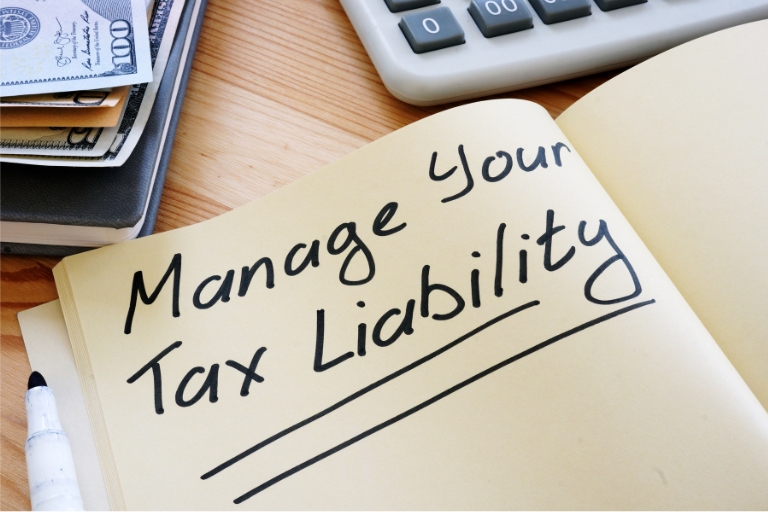Welcome to the world of tax liability and tax planning, where the numbers are made up and the points don’t matter! Well, not exactly. The numbers are very real and the points, or in this case, the tax dollars, matter a lot. But don’t worry, we’re here to guide you through this labyrinth of tax codes, deductions, and liabilities in the most entertaining way possible. Buckle up!
Before we dive in, let’s get one thing straight. Tax planning is not about evading taxes. That’s illegal and we’re not about that life. It’s about understanding your tax obligations and making smart decisions to minimize your tax liability. So, without further ado, let’s get started!
Understanding Tax Liability
Imagine tax liability as that friend who always shows up uninvited to your parties. You can’t avoid them, but you can manage them. In technical terms, tax liability is the total amount of tax debt owed by an individual, corporation, or other entity to a taxing authority. It’s like a bill from the government, and trust us, you don’t want to ignore this bill.

Now, tax liability isn’t just a flat rate for everyone. Oh no, that would be too simple. It’s calculated based on your income, deductions, credits, and other factors. It’s like a complicated math problem that changes every year. But don’t worry, we’ll break it down for you.
Components of Tax Liability
Let’s break down the components of tax liability. First, there’s the gross tax liability. This is the total amount of tax you owe before any credits or deductions. It’s like the sticker price on a car – you know you’re not going to pay that much, but it’s a starting point.
Next, we have deductions. These are expenses that you can subtract from your gross income to reduce your taxable income. It’s like using a coupon at the grocery store – it reduces the total amount you have to pay. Common deductions include mortgage interest, student loan interest, and charitable donations.
Calculating Tax Liability
Calculating tax liability is like solving a Rubik’s cube – it’s complex, but there’s a method to the madness. First, you calculate your gross income. This includes everything from your salary to your investment income. Then, you subtract your deductions to get your taxable income.
Next, you apply the tax rates. These are progressive, which means they increase as your income increases. It’s like climbing a ladder – the higher you go, the more tax you pay. Finally, you subtract any tax credits you’re eligible for. These are like golden tickets that reduce your tax liability dollar for dollar. And voila, you have your tax liability!
What is Tax Planning?
Now that we’ve covered tax liability, let’s move on to tax planning. Tax planning is like a game of chess. It’s all about strategizing and making the right moves to minimize your tax liability. It involves understanding the tax laws and using them to your advantage. It’s like knowing the rules of the game and playing to win.
Effective tax planning can help you reduce your tax liability, save for retirement, and achieve your financial goals. It’s not about cheating the system, but about understanding it and using it to your benefit. So, let’s dive into the world of tax planning!
Types of Tax Planning
There are several types of tax planning, each with its own strategies and benefits. First, there’s short-term tax planning. This involves making decisions that will affect your taxes in the current year. It’s like planning for a vacation – you’re focused on the here and now.
Then, there’s long-term tax planning. This involves making decisions that will affect your taxes in the future. It’s like planning for retirement – you’re thinking about the long game. Finally, there’s permissive tax planning. This involves using the tax laws to your advantage to minimize your tax liability. It’s like finding a loophole in the rules and using it to your advantage.
Strategies for Tax Planning
There are many strategies for tax planning, but we’ll cover a few of the most common ones. First, there’s income shifting. This involves shifting income from a high-tax bracket to a low-tax bracket. It’s like moving your money from a high-cost area to a low-cost area.
Next, there’s tax deferral. This involves delaying the payment of taxes to a future date. It’s like putting off doing your laundry – you’ll have to do it eventually, but you can enjoy the benefits of not doing it now. Finally, there’s tax avoidance. This involves using legal methods to reduce your tax liability. It’s not tax evasion – it’s just smart planning.
Conclusion
So, there you have it – a hilarious guide to tax liability and tax planning. We hope you’ve learned a thing or two and had a few laughs along the way. Remember, tax planning isn’t about evading taxes, but about understanding your obligations and making smart decisions to minimize your tax liability. So, get out there and start planning!
And remember, when it comes to taxes, it’s always better to be proactive than reactive. So, start planning today and save yourself the headache tomorrow. After all, as Benjamin Franklin once said, “In this world nothing can be said to be certain, except death and taxes.” So, let’s make the most of it!


